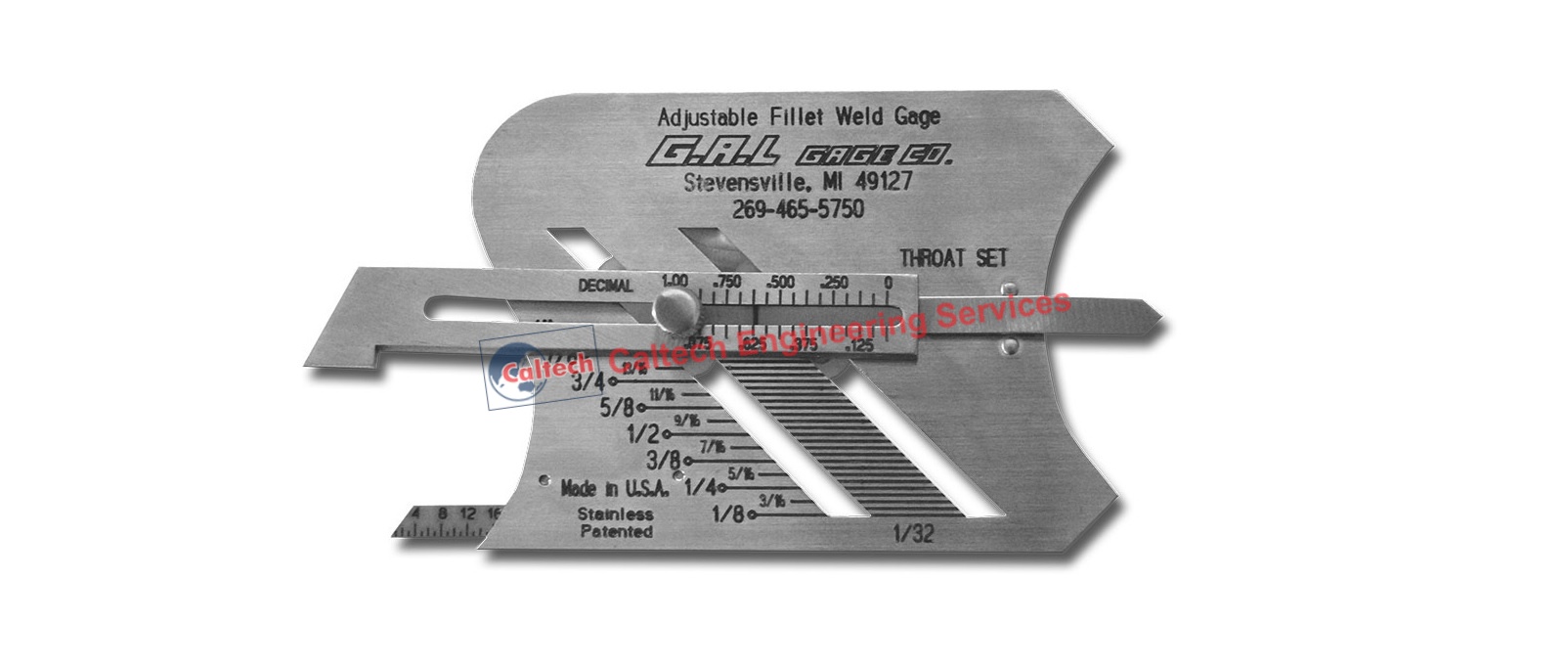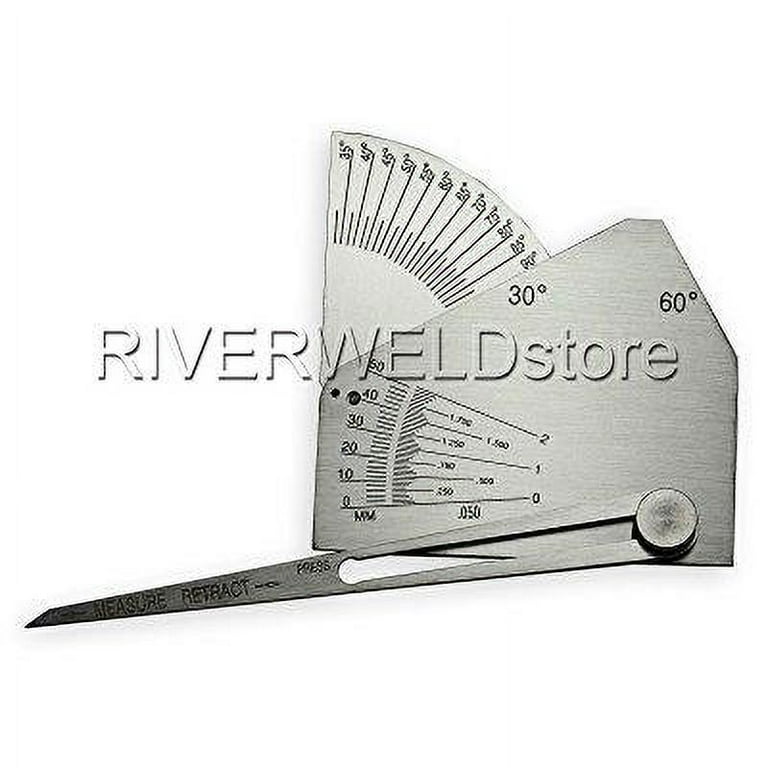Improving Your Welding Abilities: Focus on Gauge Fillet Welds
Improving Your Welding Abilities: Focus on Gauge Fillet Welds
Blog Article
Ingenious Approaches to Fillet Weld Assessment and Screening: Enhancing Weld High Quality and Conformity Specifications
In the realm of welding, the high quality and stability of fillet welds play an important role in making certain the architectural soundness and dependability of different industrial parts. With the continuous drive for improved effectiveness and compliance with rigid standards, the exploration of innovative approaches to fillet weld examination and screening has become crucial. As sectors advance, the traditional techniques might no longer be adequate in meeting the needs of modern welding applications (Gauge Fillet Weld). By embracing advanced modern technologies and techniques, a brand-new perspective of opportunities emerges in the world of weld high quality assessment and adherence to conformity criteria.
Advanced Non-Destructive Screening Approaches
Making use of cutting edge innovations, progressed non-destructive testing techniques play an important duty in guaranteeing the honesty and quality of fillet welds. These techniques, such as phased variety ultrasonic screening (PAUT) and magnetic particle testing (MPT), deal detailed insights into the weld's interior structure without causing any kind of damage to the material. PAUT, for instance, uses multiple ultrasonic aspects to inspect the weld from different angles, providing an extensive visualization of prospective flaws like absence of blend or fractures.
Similarly, MPT works in identifying surface-breaking problems by applying a magnetic area and iron bits to the weld location. This approach is particularly valuable for recognizing discontinuities that might endanger the weld's toughness. By employing these advanced non-destructive testing methods, weld examiners can properly assess the high quality of fillet welds, ensuring conformity with industry standards and guidelines. The capability to identify defects beforehand not just boosts weld quality yet additionally prevents pricey rework or failings in architectural stability, underlining the importance of these ingenious testing methods in welding examinations.
Robotics and Automation in Examination

The assimilation of robotics and automation has changed the inspection process for fillet welds, enhancing effectiveness and precision in quality evaluation. Robotics offer accurate control and repeatability in evaluating welds, making certain regular and dependable outcomes. Automated systems can be programmed to comply with particular inspection courses, guaranteeing detailed insurance coverage of welds and reducing the risk of human mistake.
Robotic inspection systems furnished with advanced sensing units can identify and gauge weld features with high accuracy, providing in-depth information for evaluation. These systems can recognize flaws such as splits, lack of fusion, and porosity, allowing timely corrective activities to be taken. In addition, robotics and automation permit real-time data collection and analysis, supplying instant feedback to drivers and assisting in fast decision-making procedures.
Additionally, the use of robotics and automation in fillet weld inspection boosts total efficiency by decreasing inspection times and increasing inspection throughput. By streamlining the evaluation process, manufacturers can guarantee weld quality and compliance criteria are met efficiently, ultimately bring about cost savings and improved product high quality.
Using Artificial Intelligence for Analysis
Synthetic knowledge plays a pivotal role in improving the efficiency and precision of analysis in fillet weld assessment procedures. By harnessing the power of AI, assessors can enhance the analysis of weld high quality and conformity standards, bring about extra accurate and dependable outcomes. AI formulas can quickly process vast amounts of data from weld evaluations, spotting issues or incongruities that might be testing to relate to the nude eye. This advanced technology makes it possible for real-time surveillance of weld top quality, enabling instant restorative activities to be taken if any type of problems are identified.
Furthermore, AI systems can pick up from previous assessment data, constantly improving their capability to identify potential flaws and deviations in fillet welds. This flexible knowing capacity boosts the overall quality assurance process, minimizing the chance of human error and ensuring that welds meet the needed requirements. By integrating man-made intelligence right Check This Out into fillet weld analysis, sectors can attain greater levels of efficiency, uniformity, and conformity in their evaluation techniques.
Portable Devices for On-Site Evaluation
Enhancing field evaluation effectiveness, the adoption of portable devices revolutionizes on-site assessment procedures for fillet welds. These tools supply versatility and benefit, enabling assessors to conduct detailed exams in various locations, consisting of remote or tough settings. Portable devices such as ultrasonic screening devices, magnetic fragment inspection dig this tools, and digital radiography systems provide real-time data and high-resolution imaging capabilities, allowing fast decision-making and prompt responses on weld quality.
One considerable benefit of mobile tools is their ability to enhance inspection procedures, lowering downtime and boosting overall productivity - Gauge Fillet Weld. Examiners can easily deliver these tools to various job websites, getting rid of the need for carrying hefty machinery or elements to off-site facilities. In addition, the transportability of these tools promotes cost-effectiveness by lessening transport costs and speeding up assessment timelines
Moreover, making use of mobile devices for on-site evaluation advertises positive quality assurance steps, as inspectors can without delay determine and attend to any kind of potential welding flaws or disparities. By integrating these ingenious technologies into on-site inspection practices, welding experts can guarantee compliance with industry standards and enhance weld high quality, ultimately causing improved architectural integrity and safety in various welding applications.
Combination of Information Administration Systems

Having optimized on-site assessment procedures with the usage of mobile tools, the following stage entails the seamless integration of information monitoring systems to additionally improve effectiveness and data evaluation capacities in fillet weld assessment and testing. By integrating information administration systems into the evaluation process, companies can improve information collection, storage, and analysis. This combination enables real-time surveillance navigate to this website of weld high quality, immediate recognition of problems, and punctual decision-making to remedy any type of problems that might develop throughout the assessment procedure.
Information management systems play an essential role in streamlining inspection data, assisting in easy accessibility for accredited workers, and making sure information stability and safety. With the assimilation of these systems, inspectors can generate detailed reports, track historical data for trend evaluation, and enhance general process efficiency. The integration of data management systems allows smooth communication between different stakeholders included in the evaluation procedure, promoting cooperation and boosting overall top quality control actions. Ultimately, the integration of information administration systems serves to raise the standards of fillet weld evaluation and screening, making certain compliance with industry policies and boosting weld top quality.
Verdict
Finally, cutting-edge approaches to fillet weld assessment and testing have considerably enhanced weld quality and conformity criteria. Advanced non-destructive screening methods, robotics, automation, expert system, portable devices, and data monitoring systems have transformed the means weld evaluations are performed. By using these innovations, markets can make sure that welds fulfill the called for quality standards and policies, eventually improving total efficiency and safety and security in welding processes.

Having enhanced on-site evaluation processes with the use of portable devices, the next phase includes the seamless assimilation of information management systems to additionally boost effectiveness and data analysis capacities in fillet weld inspection and testing. Eventually, the assimilation of information administration systems offers to raise the standards of fillet weld inspection and testing, making certain compliance with market guidelines and enhancing weld top quality.

Report this page